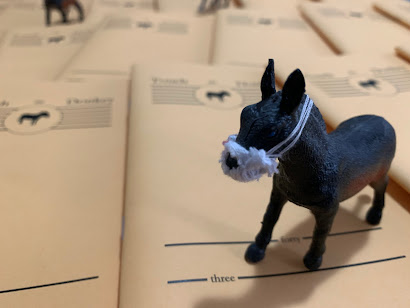Tom Jenks’ most recent books are Melamine (Red Ceilings Press) and The Philosopher (Sublunary Editions). He is also a text artist and edits the small press zimzalla, specialising in literary objects. More information at https://tomjenks.uk
An excerpt from his “Melamine” appears in the forty-third issue of Touch the Donkey.
Q: Tell me about the work-in-progress “Melamine.”
A: I’m happy to report it’s no longer a work in progress and is out in book form with the Red Ceilings Press. It’s a sequence of 8 line poems, each 2 stanzas of 4 lines. I have a changing relationship with form. Sometimes, I like to be wholly irregular. Others, I like to set myself a structure and a pathway. That’s what Melamine is. I think of each poem as a set of shelves on which I put whatever was to hand: things I was reading or listening to, what I was eating or thinking about eating, what was going on around me, the only rule being that they had to fit on the shelf without falling off. Poetic chaotic storage.
Q: How does this project compare to some of the other work you’ve been doing lately?
A: My next book The Philosopher, which is out soon on Sublunary Editions is short prose, not exactly narrative, but more linear. I also produce visual work, a mixture of visualisations of literary works (e.g. all the food and drink in The Wind in the Willows, all mentions of “love” and “death” in Romeo and Juliet) and other more concrete-style pieces. That’s a different sort of mindset, all about shape, structure and colour. But it’s the same in other ways. The reasons why I do things remain opaque to me, and long may that continue.
Q: How does any particular project begin? Do you approach first through form, or is it something more organic?
A: I’m nearly always writing or creating in some way, so I always have a lot of stuff floating around. Relationships, threads and connections tend to emerge rather than me willing them into existence. With Melamine, I wrote a few 8 line poems, wrote some longer ones, which I didn’t feel were finished and I melted down into more 8 line poems, which gave them a new lease of life. So the concept emerged from doing. I believe “praxis” is the word.
Q: What is it about examining particular structures that appeals? What do you feel is possible utilizing form in such ways, and such different ways, that might not be possible otherwise?
A: Form, for me, gives a reason to start and a reason to stop. Going back to the line as shelf analogy in Melamine, a set structure like that allows me to put things together that aren’t normally connected but nonetheless somehow can speak to one another. Having a set limit gives a sort of weird compression which I like.
Q: What brought you to this particular point? Were there specific poets or works that influenced these directions and decisions?
A: In terms of sequences, Jeff Hilson’s work, particularly In the Assarts, was something I was rereading around this time, plus Frank Kuppner, who writes long, fragmentary books. More broadly, in terms of style and content, Peter Didsbury and Jeremy Over. I also found myself referring back to my own book Spruce from 2015, a sequence of 99 x 9 line poems, just to remind myself how to do it.
Q: With more than a dozen books and chapbooks going back some fifteen years, how do you feel your work has developed? Where do you see your work headed?
A: In some ways a lot, in others not at all. I’ve done all sorts of different things – written work, visuals, conceptual projects – but I think my concerns and interests now can be traced back to then, amongst them humour, the minutiae of advanced capitalism, history and culture in all its forms. At the moment, I’m working on longer, looser pieces, trying to let my voice go where it wants, not taking off the rough edges.
Q: Finally, who do you read to reenergize your own work? What particular works can’t you help but return to?
A: as well as the aforementioned, Selima Hill, Frank O’Hara, Ivor Cutler, Leonora Carrington, Henry Green, Stuart Mills, psychedelia and, above all, my friends and contemporaries who I won’t attempt to list as I’ll forget to mention someone and they won’t come to my funeral. Actually, not sure I’ll bother to turn up to that myself, as I hear the sandwiches will be awful.

No comments:
Post a Comment
Note: Only a member of this blog may post a comment.